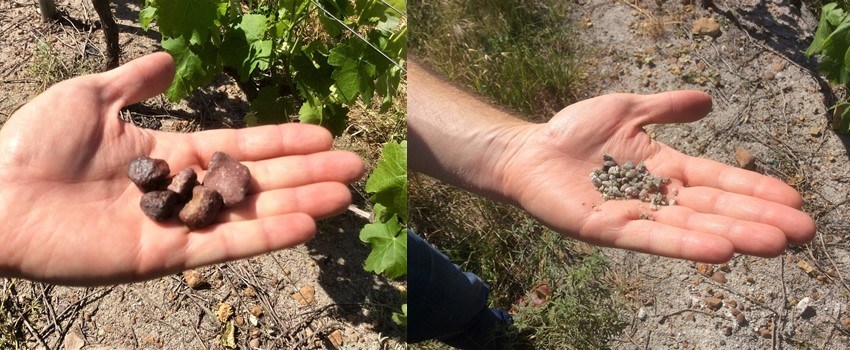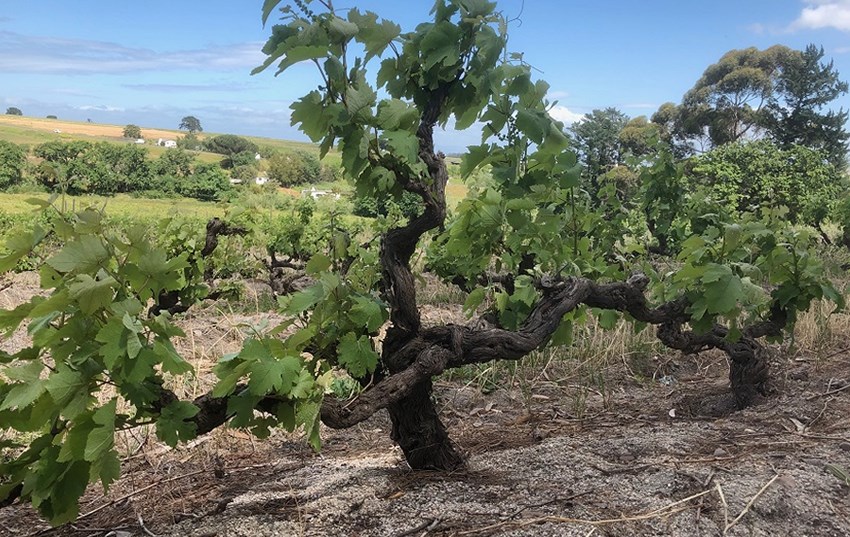The ‘Golden Triangle’ of vineyards on the Helderberg side of Stellenbosch has long been respected for its granite derived sandstone and shale red soils like Oakleaf and Tukulu, giving rise to the sensational wines of Alto, Waterford, De Trafford, Longridge, Haskell, Rust en Vrede, Ken Forrester and many others.
Well, many top wineries and winemakers recognise another ‘golden’ patch; a triangle contiguous to the above but on the Somerset West side, more directly facing the ocean, which encompasses Helderberg West Peak, Firgrove and Faure.
This triangle begins high in the Helderberg Peak and spreads west, close to Winery Road and south to Firgrove.
This triangle is less well known, and perhaps not as glamorous, but ask some of those that source fruit from it – like the Mullineux, Erika Obermeyer, Spier or De Morgenzon, or those sitting amongst it - like Stonewall, Metzer, Yonder Hill, Miravel and Cordoba.
Ask Wade Metzer. Wade believes there is a very strong case for a new Ward in the Stellenbosch District, ‘Helderberg’ or even two; ‘Helderberg West Peak’ and ‘Firgrove’. Certainly the terroirs are distinguished, recognisable and different to other Stellenbosch pockets. A new Ward might allow producers to choose to continue as Stellenbosch WO or move to a more precise Helderberg WO.
This undulating triangle rises to some 400 metres, goes as close as three kilometres to the ocean and gets some 300 days a year of cool ocean breezes. Soils are remarkable and varied, so tough in places early vineyard owners used dynamite to make it workable.
The source of Wade’s Shiraz is a good example. Only three hectares, it has quartz, sand and granite nearest the ocean, more pink granite, koffieklip-ironstone and weathered sandstone further up the slope, and more clay toward the mountain, all within a stone’s throw. Its colours are different, too, visually noticeable, and ripening from the first row to the last can be ten days apart. Significantly, ocean breezes have more impact here than towards Stellenbosch, this really is a Stellenbosch cooler climate.

Pink granite (left) and quartz (right)
Metzer Family Wines are all about place. Wade sources from some 12 vineyards, but all within the Helderberg. Most of his sources are bush vines, and very old. Wade is positive about the focus of ‘The Old Vine Project’ and apart from the beauty of the Montane Chenin Blanc patch, planted in 1964, he says old vine grapes are “just so easy to work with in the cellar”. He is amazed that despite varying vintage conditions, his old vines yield almost identical laboratory analysis each year.
Wade has found classic field blend evidence amongst his ‘Montane Chenin Blanc’ vines, there are tiny amounts of Sémillon and Muscat dotted here and there. Will he leave them in? “Yes, you have to respect your viticultural heritage”.
Wade believes the vine grower is key and anyone aiming to make terroir driven wines must stay close to the vineyard. “Look at the great producers of the Swartland, they are able to make such wines because they “live and breathe the Swartland, you need to be present, proximity counts when reflecting terroir”. The Swartland shows how important that connection is, says Wade, “with a harvesting window of say 3 or 4 days you need to be part of the terroir and understand it”. He believes the grower is part of the terroir, but, he adds, “wines don’t make themselves”. Wade says it takes time to understand your vineyards and the wines it can make, measured in years, and this a key part of making better wines. In years to come he and his wines want to be “synonymous with the Helderberg West Peak area”.
Winemaker Johan Kruger of Kruger Family Wines says it is vital to recognise the importance of the site and the grower; that is why he always names his growers and pays tribute to each on his wine back labels.
All of Wade Metzer’s sites in the Helderberg are dry farmed, the reason yield fell by 50% in 2019 after three years of drought, and his wines are from single vineyards, his ‘Maritime Chenin Blanc’ sits just four kilometres from and directly facing the ocean. He has never added acid to his wines. Wade’s Montane vines, now 55 years old and straggly, beautiful, gnarly veterans, still have healthy yields, his Shiraz can provide eight tons or so per hectare, but he often gets just four tons. “This year we’ve planted Lupins as a cover crop between vines to add to grasses, wild flowers, peas and radishes”.

Winemaking is kept simple, natural ferments, basket pressing, one punch-down a day. “Our Shiraz is ripe at 13% and colour is never a problem (with such a long ‘hang-time’) - I was once told you don’t make a better cup of tea by stirring it”.
“Too much winemaking and you lose the sense of site, keep it simple, to reflect a place you need primary fruit. My job is to put each site into the bottle”.
Wade’s 2018 Cinsault at 12% alcohol shows lavender and garrigue, pomegranate, ripeness and backbone, not overtly New World, his Shiraz is a show-stopper, with elegance, florality and perfume, almost delicately fine and very seductive. He deliberately avoids copying Napa or Bordeaux for his Cabernet Sauvignon; aiming for vibrant supple tannins, drinkability and elegance, “very South African”.
“The super quality of South African wines is largely because of the collective thinking and sharing between winemakers”, says Wade. He adds the willingness of winegrowers and winemakers to help each other and give and take advice is part of our wine progress.
There’s no doubt that the increasing recognition of individual terroirs, like that of the Helderberg, is an important part of the search for wine quality. Definitely worth its own Wine of Origin.
www. metzerwines.com